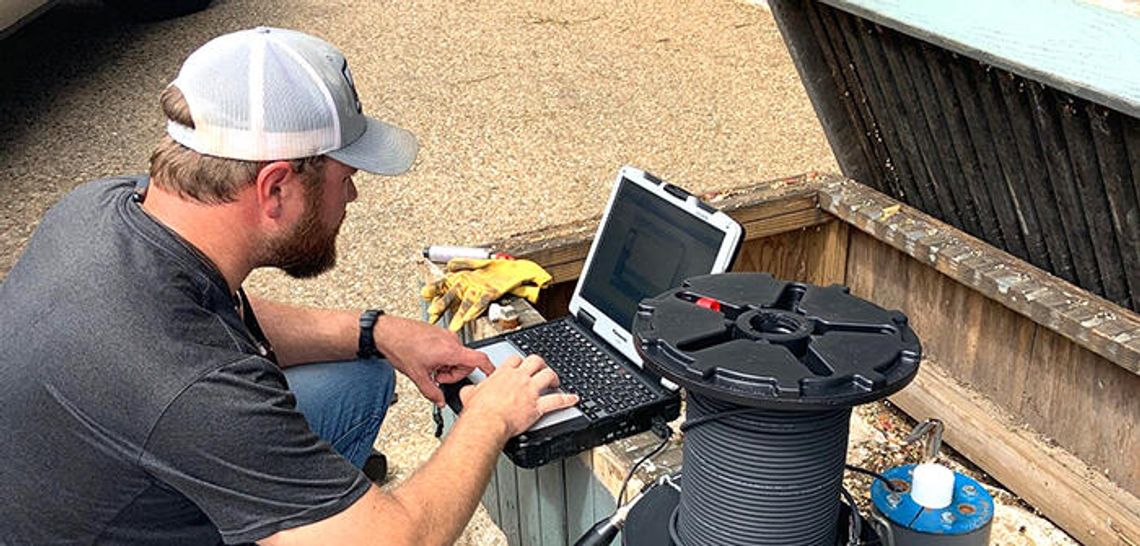The Middle Trinity Aquifer has risen and fallen within the past 10 years but it is declining overall, the principal hydrogeologist for the Barton Springs Edwards Aquifer Conservation District (BSEACD) told the Hays County Commissioners Court during their Oct. 22 meeting.
Brian Smith put up a slide showing the hydrology of the Middle Trinity between 2008 and 2018 as part of a presentation on a long-term study of the sustainability of the resource ahead of a vote by the court to dedicate $58,000 of the county’s money toward the effort.
The slide illustrated the usual upticks during “wet” periods like early 2018 and plunges during droughts like 2011. However, the water levels have decreased overall and Smith said that is a “pattern we are seeing throughout Hays County” even as the county’s population continues to surge.
The overall study, which will include the installation of two monitor wells “upgradient” from Jacob’s Well, one very near the artesian spring and another about a mile away, intends to determine how much water can be withdrawn “without producing an undesired result.”
Sustainability is not so much a scientific term, Smith said, but a science-based tool that policy makers can use “to minimize impacts to water supply wells and impacts to springs and other water resources.”
Such knowledge is crucial to those who are responsible for issuing permits he said. “We need to do the science – is there going to be an impact?”
In addition to water level monitoring the study includes analytical modeling, water sampling, dye tests and other types of groundwater modeling.”
“We need to see what is happening with pumping. We need to see what’s happening with drought. How does it impact Jacob’s Well … We need to better understand the aquifers so we can better manage them,” Smith said, referring to both the Trinity and the Edwards.
According to background agenda information, one of the two wells will be a “multiport” system that will monitor “five or six unique hydrologic zones,” each of which “will be tested for hydraulic conductivity, water levels, and water quality,” and that information will allow for a “detailed analysis of how water moves vertically and horizontally through the aquifers.” Both will be drilled into the Cow Creek Formation of the Middle Trinity at depths of about 250 feet below the surface.
Once the wells are completed, dye tests will begin, with two or three dyes “injected into caves, recharge features or wells” after which the movement of the dyes into Jacob’s Well and water supply wells downgradient from the injection points will be observed.
“Periodic water level measurements will be made in the new monitor wells and in additional wells in the area to understand how the aquifers respond to drought and pumping,” the background materials say. “One, or both, of the proposed monitor wells could be used as index wells for determination of drought and excessive pumping.”
Installation of the monitor wells required an interlocal agreement, which is what the court approved, because Jacob’s Well is within Hays County but not within the BSEACD. The hydrology slide presented by Smith was based on wells near Wimberley.
County Judge Ruben Becerra told Smith he appreciated being given the information. “Even at a peak, we were never where we were before,” he said. “It seems there is no full recharge in sight, and as one of the fastest-growing counties in the state, I think that is a very big deal. This is very essential for us as a region.”
Becerra added he hopes “we are as committed to finding new sources of water” as we are to studying those that now exist.
Pct. 3 Commissioner Lon Shell, in whose jurisdiction Jacob’s Well is located, noted that the study is important now and will be even more so in the future as the county continues to grow and new subdivisions continue to go in. “We’ve seen droughts in the past where we saw wells go dry,” he said. “If we had the same drought we had 10 years ago it would be much worse … if we don’t get ahead of that with science, I’m afraid we will be in a position where there’s nothing we can do to help people.”
Shell also praised the partnerships the county has with the BSEACD, the Texas Water Development Board (TDWB) and others. “We’re going to be relying on those more and more in the future,” he said. “This is just the beginning … I’m looking forward to getting this science done.”










